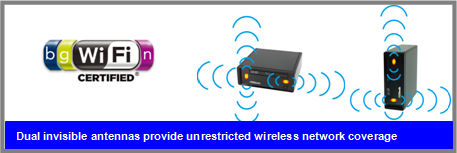In the world of wireless internet, two new standards have emerged: Wi-Fi 6 and Wi-Fi 6E. Both offer improved performance over their predecessors, but which one should you choose for your home or office? Let’s delve into the differences in performance, price, and device availability to help you make an informed decision.
Performance Differences
Wi-Fi 6 and Wi-Fi 6E are both advanced wireless standards, but they have some key differences in terms of performance.

Wi-Fi 6
Wi-Fi 6 operates on the 2.4GHz and 5GHz bands. It uses 1024 Quadrature Amplitude Modulation (1024-QAM) to squeeze as much as 25% more data into the same frequency range. This technology can handle up to eight independent streams of data, creating reliable connections to devices throughout the house. At a distance of 15 feet, Wi-Fi 6 delivers a data rate of 1.146 Gbps.
Wi-Fi 6E
Wi-Fi 6E is an extended implementation of Wi-Fi 6. It operates on the 2.4GHz, 5GHz, and 6GHz bands. The addition of the 6GHz band means faster speeds, more connections, and less interference from congestion. Wi-Fi 6E not only pushes data throughput higher by adding more than a gigahertz of wireless spectrum but also opens up ultra-wide data channels. At the same distance of 15 feet, Wi-Fi 6E delivers a data rate of 1.788 Gbps.
Price Differences
When it comes to price, there’s a noticeable difference between Wi-Fi 6 and Wi-Fi 6E routers.
Wi-Fi 6
On average, Wi-Fi 6 routers cost about $250, with some models available at half the price. These routers are more affordable because they’ve been on the market for a while, and there are many options to choose from.
Wi-Fi 6E
Wi-Fi 6E routers are generally more expensive than Wi-Fi 6 routers. This is because Wi-Fi 6E is a newer technology, and there are fewer models available. However, as more devices support Wi-Fi 6E, the cost is expected to decrease.
Device Availability
The availability of devices that support Wi-Fi 6E has been increasing. As of the end of 2021, an impressive 160 Wi-Fi devices and routers supported Wi-Fi 6E technology. The list of launched Wi-Fi 6E-capable units includes laptop PCs, desktop PCs, PC motherboards, phones, routers, gateways, enterprise APs, and TVs.
For Apple devices, to join a Wi-Fi 6E network, you need one of these devices: iMac (24-inch, 2023), MacBook Pro (14-inch, Nov 2023), MacBook Pro (16-inch, Nov 2023), MacBook Pro (14-inch, 2023) or MacBook Pro (16-inch, 2023), Mac mini (2023), Mac Studio (2023), Mac Pro (2023), iPhone 15 Pro or iPhone 15 Pro Max.
Wi-Fi 6E routers are already available from major manufacturers like Netgear, Orbi, Linksys, and Asus. Their prices range from ISP rental charges around $20/£20 a month to over $1,000/£1,000 to purchase yourself.
Given the substantial number of new releases, it’s estimated that the current number of Wi-Fi 6E-capable devices and routers may now be closer to 200 types and models. So, the availability of devices supporting Wi-Fi 6E is quite broad and is expected to increase as the technology becomes more widespread.
Conclusion
In conclusion, if you need the additional benefits of Wi-Fi 6E and are willing to pay the extra cost, then Wi-Fi 6E may be a better choice for you. However, if you’re on a budget and dropped signals aren’t an issue for you, then Wi-Fi 6 would be a much better option. Ultimately, the choice between Wi-Fi 6 and Wi-Fi 6E will depend on your specific needs and budget.





